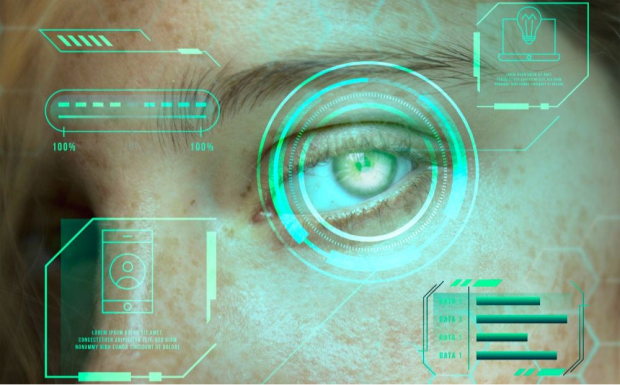
LIDAR: The Eye of the Electronics World
LIDAR: The Eye of the Electronics World
In this blog post, after explaining what the Lidar sensor is and the features that make this sensor different from the ultrasonic sensor, we will talk about the advantages and density we will have when we use the Lidar sensor.
Lidar, which stands for "Light Detection and Ranging", is a sensor that can measure the distance of objects using laser pulses. The distance is measured by multiplying the time it takes for the light sent from the transmitter to reflect off the object and arrive at the receiver by the speed of light and dividing the result by two. Lidar sensor is used in various fields such as 3D mapping, environmental monitoring, autonomous vehicles and environmental analysis.
When the concept of Lidar emerged in the 1960s, it was used for atmospheric research and distance measurement. It was only after the Apollo 15 mission mapped the surface of the moon with a Lidar in 1971 that the public gained confidence in this sensor. Today, Lidar sensors are actively used in various fields.
Differences between Lidar Sensor and Ultrasonic Sensor
- Lidar uses laser light while the ultrasonic sensor uses high frequency sound waves.
- Lidar has high precision and accuracy, while the ultrasonic sensor does not have as high precision and accuracy as Lidar.
- Ultrasonic sensors perform better than Lidar in measuring distances as close as 2 meters.
- The Lidar sensor can tolerate most weather conditions and can perform better than the ultrasonic sensor in conditions such as rain and fog.
Advantages and Disadvantages of Lidar Sensor
- Advantages
- High Precision: High precision measurements can be made with Lidar.
- 3D Detection: It can be used in 3D as well as 2D.
- Fast Scanning: Since it uses laser light, it can scan very fast.
- Intensive Data Flow: Since it has a fast measurement, we can get intense data flow.
- Weather Resistance: It is more resistant to weather conditions than other sensors.
- Disadvantages
- High Cost: Lidar is much more expensive and costly than other sensors.
- Data Analysis Difficulty: Lidar can require extra resources and skills to analyze the dense and complex data.
- Computer Infrastructure: Because Lidar has dense and large data sets, it requires a powerful computer infrastructure to process the data.
- Energy Consumption: Lidar consumes more energy than other sensors due to data processing, power supply or cooling system.
Important Items in Lidar
-Field of view: Determines how wide an area the Lidar can detect.
- Range: Determines the distance the Lidar can detect.
- Vertical field of view: Determines how much height and depth the Lidar can detect relative to the horizontal plane.
- Channel size: Determines how many laser sources it can use at the same time. The more channels, the faster it can scan and acquire data sets.
Main Uses of Lidar in Agriculture
- Autonomous Agricultural Robots
- Plant Detection
- Controlled disinfestation
- Obstacle Detection
- Plant Density and Height Monitoring
- Soil Analysis
Common Uses of Lidar
- Solid State Lidar
Because Solid State Lidar uses a fixed laser source, it has no rotating mechanical parts and is therefore more robust. This Lidar is mostly used in industrial robots or security systems.
However, Solid State Lidar has a limited field of view and has a lower resolution than the Surround Lidar sensor.
Advantages
- Smaller and Lighter
- More Durable
- Lower Power Consumption
Disadvantages
- Limited Viewing Angle
- Lower Resolution
- Surround Lidar
It has a rotating part and can scan with a 360-degree viewing angle. Since it has more than one laser sources, it can scan in different directions at the same time. It is especially used in autonomous vehicles to detect objects around the vehicle.
Surround Lidar is a more costly sensor than Solid State Lidar. It is also heavier and larger due to the difference in its mechanical parts.
Advantages
- 360 Degree View
- Fast Scan
- Can Detect Farther Distance
Disadvantages
- Cost
- Size and Weight
In autonomous vehicles, the advantages of Lidar sensors play an important role in choosing to use these sensors. With the fast scanning and high data flow of these sensors, they make it easier to carry out autonomous driving under difficult conditions by using features such as 3D scanning, obstacle detection, location detection and mapping. As Orbiba Robotics, we are actively working on the solutions we can offer in the field of agriculture using the most advanced technologies.
Jr. Full Stack Developer
HÜSEYİN SÜSLÜ
References
- https://www.researchgate.net/publication/338409374_Lidar_Light_Detection_and_Ranging_Sensorlerin_Tarimda_Kullanimi
- https://en.wikipedia.org/wiki/Lidar
- https://scholar.googleusercontent.com/scholar?q=cache:b7P8S8sZ0v4J:scholar.google.com/&hl=tr&as_sdt=0,5&scilib=1&scioq=tarımda+modern+teknolojiler+lidar+görünteleme
- https://medium.com/analytics-vidhya/lidar-light-detection-and-ranging-sensor-chapter-1-68cad17c8847
- https://www.elektrikde.com/lidar-sensor-nedir-nasil-calisir-nerelerde-kullanilir/
- Image by <a href="https://www.freepik.com/free-photo/face-recognition-personal-identification-collage_96364020.htm#query=lidar%20elektronik%20d%C3%BCnyas%C4%B1n%C4%B1n%20g%C3%B6z%C3%BC&position=19&from_view=search&track=ais&uuid=3afa5741-bc74-40bf-9b7f-1277caeaf74b">Freepik</a>
